|
Ready For Any Size Disaster. Helping People Recover Quickly Since 1999. Call Now. Residential & Commercial Restoration & Cleaning Services www.GTARestoration.com – 24-Hour Emergency Plumbing Services: Water Damage Restoration, Fire Damage Restoration, Flooded Basement Cleanup, Mold Removal & Remediation – Serving Toronto & the GTA. Insurance Billing · Restoring Since 1999 · Newest Technology Priority Services: Water Restoration, Mold Restoration, Fire Restoration Extraction and Remediation With Warranty. Call Emergency Restoration Response Group in Toronto Now! Low Equipment Cost · Deductible Paid · Free Consultation Service catalog: Flood Cleanup, Water Remediation, Hazardous Material Water, Flood, Fire, Smoke, Mold, Infection Control · 24/7 Emergency Service · Damage Restoration 24/7 Water Restoration & Flood Damage Cleanup - Water Damage... Water Extraction. When you need emergency water extraction, you can call 24 hours a day, 7 days a week to get a certified water damage technician to start the water damage extraction process right away! Our water extraction service is first class. We only use state-of-the-art equipment and techniques to get the water out - now! Contact Us Before You Call Your Insurance Company - We Can Help Avoid Policy Increases. Insurance Claims From Start To Finish - Avoid A Zero Gain Insurance Claim.
In This Blog3. Introduction 5. The Fundamentals 6. Don’t be a Marvin Mold Grower! 8. A Personal Story 9. The Laws of Thermodynamics 11. Applying Thermodynamics to your jobs 14. LGR Dehumidifier So you want a professional property restorer?Of course you do! That’s why you’re reading this Blog! On the surface, it might look like an easy job of putting in equipment and walking away. Do that... if you want to help mold build up. Water restoration is a complex trade! It requires a fundamental understanding of: building science, structural building practices, and the science that surrounds water damage restoration. The deeper your knowledge of building sciences and building compositions, and the greater your knowledge is of how building materials respond to moisture, the more likely you’ll be able to increase your profitability and deliver a successfully dried project. Become a sponge: learn everything you can about the science and let the knowledge soak in. After all, drying a building is about atmospheric sciences inside and outside the structure. It’s about the molecules and microorganisms that live within your job and it is the application of science that allows you to pull the moisture out. Here is the good news, this blog is going to simplify the difficult science to help a novice/intermediate restorer make better decisions in the field. This blog won’t replace the courses and hands on knowledge that you will get from the classroom and field, but it will help supplement your learning. At GTA Restoration, we know it’s hard to master every project—and that’s ok. We’re going to help you understand the concepts and help you manage all the information that comes your way. By the end of this blog, you will have the skills needed to be able to start drying a building. We also have a new Moisture tool that can help you simplify your water damage property. The time you spend with a qualified trainer who has field knowledge and can allow you to learn by relating to their experience is key. If you are using GTA Restoration, you’ll have the playbook that helps you unleash the full potential of saving your property. However, note that nothing replaces the technical training of the IICRC and the advance learning of the Restoration Industry Association. Want to be a ‘Power Restorer’? Want to own your town and be known as a ‘Drying God’? Do you have dreams of being called on stage for your Super Hero-Like Skills? Keep reading and join the elite team of GTA Restoration. The FundamentalsSometimes, we forget the fundamentals of Water Damage Toronto. Our goal as a restoration professional is to return the building materials to a dry standard or the same moisture level as the other unaffected materials in the building, or to remove, clean, and disinfect the structural materials. The dry standard is the target moisture content for the particular material in its normal (unaffected) state within that structure/specific micro-climate. Materials become ‘dry’ once they reach the dry standard. This level depends on the type of material, the location of the material in the building, and even where you live and the time of the season. The various tools you use on the project may also provide you with relatively high or low readings depending on the circumstances. For example, a piece of oak wood in a dry climate might have a dry standard (drying goal) of 6% moisture level. Whereas the same piece of wood on the East Coast might have a dry standard of 10%. These levels can fluctuate structure to structure and change throughout the year depending on the prevailing weather. This is why it is highly Moisture Level (ML): the amount of moisture contained in the material on a relative scale. Moisture level is used when the tool is not calibrated for the specific material. (IICRC S500 V4, 2015, 328) Moisture Content (MC): the amount of water contained in a material, expressed as a percentage of the weight of the oven dry material. If a restorer is measuring materials with an instrument that is calibrated for that material, then it is recommended that the term Moisture Content be used (IICRC S500 V4, 2015, 328). recommended that a restorer does not use a regional dry standard for drying materials, but uses a specific dry standard for that structure when possible. Don’t be a Marvin Mold Grower!
A Personal Story...
The Laws of ThermodynamicsUnderstanding the forces that you apply to a building will increase your chances of success. Thermodynamics are the laws that manage energy. For this blog, we’ll simplify the laws. You can apply them to your jobs as these concepts will help you understand drying.
LAW OF EQUILIBRIUM
Think of air as having energy. An easy way to do this is to look at the weather. A fierce thunderstorm will often follow a hot, humid day. Hot, wet air has a lot of energy in it. You rarely see a thunderstorm in the winter in Canada and the northern United States because colder air has less moisture and energy to create those spectacular storms.
Applying Thermodynamics to your jobsAs we take the Laws of Thermodynamics and apply them in the real world, it gets complicated as you have many different temperatures and heat energy loads in and around the building. It takes a lot of energy to evaporate moisture into the air. (Law #1 says we cannot destroy energy, we can only transfer it) so as we release the moisture from the materials into the air, the air is now holding onto that energy. For air to move energy, it needs to hold the energy. According to the second Law of Thermodynamics, the Law of Equilibrium, energy in the air wants to balance with an area of lower energy in the surrounding environment.
Can’t get enough on moisture jobs? Neither can we!That’s why we’re releasing
Chapter Two: The Importance of Vapor Pressure, Dew Point, and Temperature in the next few weeks. You’ll learn:
Request a free demo to try out our new Moisture tool. Toronto 's #1 Water Damage Restoration and Mold Removal Specialists. This is one of the many reasons why our technicians will respond within 45 minutes of your call to provide immediate mold removal service in Baltimore assistance and save your home. Additionally, our specialists are available 24/7/365 we will be there for you at all hours and times when you need us the most. Contact Us Before You Call Your Insurance Company - We Can Help Avoid Policy Increases. Insurance Claims From Start To Finish - Avoid A Zero Gain Insurance Claim. Tags, Infection Control · 24 Hours Emergency Restoration Service ·Water & Mold Damage Remediation
|
Restoration
|
- Emergency Response 24-7
- 647-692-3155
- Service Toronto
-
Restorations
- Disaster Restoration
- Disaster Reconstruction
- Carpet Restoration
- Art Restoration
- Catastrophe Cleanup
- Wind, Tornado and Hurricane Damage
- Hail Damage
- Environmental Cleanup
- Soft Content Restoration
- Document Recovery
- Content Handling, Cleaning & Storage
- Waterproofing
- Foundation Repair
- Crawl Space Repair
- Crack Repairs
- About Us
- Free Advice
- Special Offers
- GTA Restoration
- Toronto
- Asbestos Removal Services Oakville
- Soot Cleanup Oakville
- Sewage Backup Scarborough
- Blog
- Water Damage Restoration East York
- Water Damage Restoration
- Black Mold Remediation Mississauga
- Mould Inspection Mississauga
- Thank you
|
|
|
|
|
|
|
Check your card balance!
|
|
|
Copyright © 2009 - 2024 GTARestoration.net All Rights Reserved. For more Info, visit: "GTA Restoration"
Designed by GTARestoration
Designed by GTARestoration
















 RSS Feed
RSS Feed








